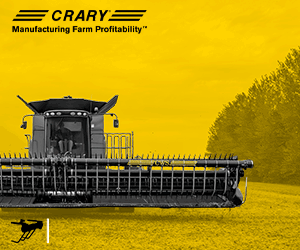Grain transportation
FROM THE CEO'S DESK

PEOPLE WHO KNOW I am still active with our family farm in southeastern Saskatchewan often stop and ask me about our farming operation and what’s happening in western grain markets. Lately, those discussions have centered on the transport of grain and the difficulties western producers are facing with getting the crop to market. Many have asked if we have been affected on our farm and if the news coverage they are seeing is an accurate depiction of the situation.
The answer to both questions is yes. Elevators and on-farm storage bins are full to the brim, but every day dozens of ships along the west coast are sitting empty and domestic processors are reducing their capacity due to a lack of supply. After a record crop of wheat and other grains in 2013 (about 76 million tonnes), insufficient rail capacity through the Prairies is creating a backlog across the entire supply chain. Even producers with crops that were contracted for specific delivery dates are facing challenges getting their grain into the commercial system. For example, on our farm, we had grain contracted for November that wasn’t taken until March. And we were lucky; neighbours with contracts for October are still in the process of making delivery.
The reasons or excuses for this backlog are many. Some attribute it to a reduction in the number of rail cars and locomotives in operation, as well as severe winter weather which limited the length and number of trains that rail lines were able to operate. There has also been an increase in shipments of crude oil by rail, which some say is having an impact on rail loads.
These transportation challenges are creating a financial strain on the industry. Farmers aren’t seeing the cash flow they anticipated and exporters are being hit with fines for vessel delays. The Federal government has recognized the seriousness of this problem. They set a quota of one million tonnes of grain per week that must be moved by Canadian National Railway and Canadian Pacific Railway. Failure to meet this quota, which doubles the volume of grain being moved by rail, could result in fines of $100,000 per day. The Federal government is also investing more than $1.5 million in a five-year, multi-sector collaboration project led by Pulse Canada to improve supply chain efficiency and reliability in the long-term.
Reliability is the key concern here. It’s important to provide customers with a consistent supply of product. Canada has built a reputation for providing quality grain on the export market; but if we can’t be relied on to deliver, those customers will go elsewhere even if it is not their first choice to do so. However, the solution is not as simple as adding more rail cars; there needs to be a coordinated logistics effort between farmers, grain handlers, and transportation providers.
As somebody who is experiencing the challenges created by the rail backlog first-hand, I can tell you how fortunate we are here in Ontario to have direct access to shipping ports and domestic end users. Most farms are within 200 kilometres of a port with good highway infrastructure for trucks. This infrastructure has been key to growing exports from this province – particularly in the soybean market where volumes are steadily increasing year over year. And cost-wise, our central location within Canada gives Ontario at least a $40 per tonne freight advantage over the west.
Ontario grain farmers are in a great position to maintain and grow their long-term relationships with their customers on both the domestic and international level. We can be that consistent provider of quality grains that our customers deserve. •








